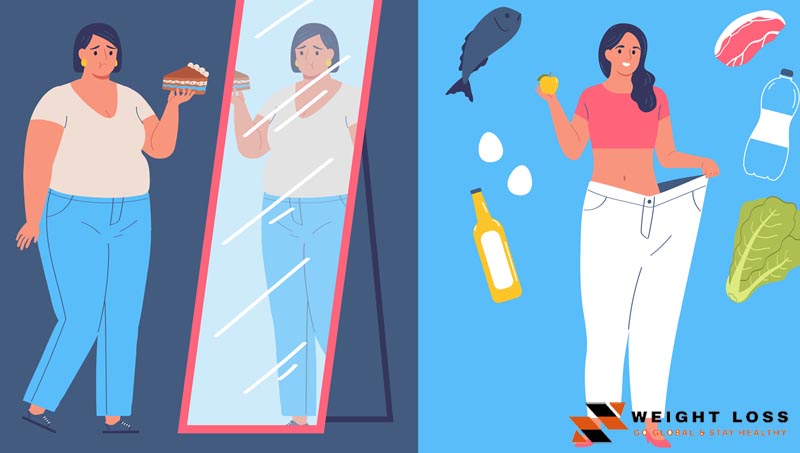Can Weight Loss Help Sciatica Pain?

Sciatica pain can be a debilitating condition that affects millions of people around the world. It’s characterized by pain radiating along the sciatic nerve, which runs from your lower back down to your legs. One of the often-overlooked contributors to sciatica is excess body weight. So the question arises: can weight loss help sciatica pain? In this blog, we’ll explore the relationship between body weight and sciatic nerve pain, and how shedding those extra pounds could make a significant difference in your comfort and mobility.
What Is Sciatica?
Sciatica is not a condition itself, but rather a symptom of an underlying problem—typically a herniated disc, spinal stenosis, or piriformis syndrome. It involves the compression or irritation of the sciatic nerve, leading to pain, numbness, tingling, or weakness in the leg.
Common symptoms of sciatica include:
- Shooting pain in the lower back, buttocks, and down one leg
- Numbness or tingling sensations in the leg or foot
- Muscle weakness in the affected leg
- Pain that worsens with sitting, standing, or certain movements
How Body Weight Influences Sciatica
Being overweight or obese places added pressure on the spine, especially the lower back. The lumbar spine bears much of the body’s weight, and excess fat can strain the spinal structures, increasing the risk of disc problems or nerve compression.
Here are a few ways in which weight contributes to sciatica:
- Increased pressure on spinal discs
- Worsened posture and spinal alignment
- Inflammation from fat cells (adipose tissue) aggravates nerve pain
- Limited mobility leading to muscle stiffness and weakness
Can Weight Loss Help Sciatica Pain?
Yes, weight loss can significantly help reduce sciatica pain for many individuals. Losing weight reduces the mechanical load on the spine and may relieve compression of the sciatic nerve. It can also reduce inflammation, which is a key driver of nerve pain.
Here’s how weight loss improves sciatica symptoms:
- Less pressure on spinal discs: A lighter frame reduces compression on the vertebrae and discs, lessening the chance of nerve impingement.
- Better spinal alignment: Weight loss can improve posture and spinal curvature, especially in the lower back.
- Reduced systemic inflammation: Fat cells secrete inflammatory chemicals. Losing weight helps decrease these markers, easing nerve irritation.
- Enhanced mobility: Physical activity becomes easier, which in turn supports spinal health and muscular balance.
How Much Weight Loss Is Needed to See Results?
Even modest weight loss—around 5–10% of your body weight—can lead to noticeable improvements in sciatica symptoms. The goal should be gradual and sustainable weight loss through a combination of diet and physical activity.
Best Exercises for Weight Loss and Sciatica Relief
Not all exercises are safe for people with sciatica. You’ll want to choose low-impact, spine-friendly workouts that help burn calories while strengthening core and back muscles.
1. Walking
Walking is a gentle, low-impact exercise that helps maintain spine mobility and encourages weight loss. Aim for at least 30 minutes per day at a moderate pace.
2. Swimming or Water Aerobics
Water supports the body and reduces joint stress, making it ideal for people with back pain. It’s excellent for burning calories and improving muscular endurance.
3. Yoga and Stretching
Yoga poses like Child’s Pose, Cat-Cow, and Downward Dog stretch and strengthen back muscles, improve flexibility, and relieve nerve tension.
4. Stationary Cycling
Cycling on a recumbent or upright bike provides a cardio workout without jarring the spine.
Healthy Eating Tips for Sustainable Weight Loss
Diet plays a major role in weight loss and inflammation control. A well-balanced, anti-inflammatory diet can support sciatica relief while promoting overall health.
Recommended foods:
- Leafy greens (spinach, kale, arugula)
- Fatty fish (salmon, sardines, mackerel)
- Whole grains (quinoa, oats, brown rice)
- Berries and antioxidant-rich fruits
- Nuts, seeds, and healthy fats (olive oil, avocado)
Avoid or limit:
- Sugary snacks and soda
- Fried and processed foods
- Refined carbs like white bread and pastries
- Excessive alcohol and caffeine
Real Stories: How Weight Loss Helped Sciatica Sufferers
Many people who have struggled with chronic sciatica pain report significant relief after losing weight. Here are a few brief testimonials:
Michael, 42: "I lost 25 pounds over 6 months with walking and better eating. The nerve pain in my leg is almost gone."
Lisa, 35: "Yoga and dropping just 15 pounds helped me stop relying on painkillers every day."
Other Tips to Support Sciatica Recovery
Weight loss is important, but a multi-faceted approach yields the best results. Consider combining weight management with these strategies:
- Physical therapy: A PT can teach you exercises that reduce pressure on the sciatic nerve
- Proper posture: Use ergonomic chairs and avoid slouching
- Sleep support: Sleep on your side with a pillow between your knees
- Mind-body techniques: Meditation and stress reduction can help manage chronic pain
When to See a Doctor
If your sciatica pain is severe, persistent, or worsening despite lifestyle changes, it’s important to consult a healthcare provider. They may recommend imaging, physical therapy, medications, or other interventions.
Conclusion: The Weight-Sciatica Connection
So, can weight loss help sciatica pain? The answer is a resounding yes. While it’s not a magic cure, reducing excess body weight can significantly ease pressure on the spine, improve mobility, and lower inflammation—all of which are crucial for relieving sciatic nerve pain.
By adopting a healthy lifestyle that includes proper nutrition, physical activity, and self-care, you may be able to manage your sciatica more effectively—and enjoy a better quality of life as a result.
Take that first step toward a healthier back and a pain-free life today.
A Deeper Dive into the Mechanisms: How Weight Impacts Sciatic Nerve Health
While we've established the link, it’s essential to understand the intricate biological and mechanical processes at play. The human spine is a marvel of engineering, but it has its limits. The lumbar region, in particular, is designed to support the upper body. When you carry extra weight, especially around the abdomen, it shifts your center of gravity forward. This forces the lower back muscles and ligaments to work harder to maintain balance. This constant strain can lead to muscle fatigue, spasms, and an increased risk of spinal injuries.
The Role of Adipose Tissue and Inflammation
Beyond the simple mechanical stress, modern science has revealed a deeper connection between fat and chronic pain. Adipose tissue, or body fat, is not just inert storage. It’s a metabolically active organ that releases various hormones and inflammatory cytokines into the bloodstream. These chemicals, such as TNF-α and IL-6, are part of the body's inflammatory response. While inflammation is a necessary part of healing, chronic, low-grade inflammation can irritate nerves, including the sciatic nerve. Losing weight decreases the amount of these pro-inflammatory cytokines, creating a less hostile environment for your nerves and potentially reducing pain.
Improving Posture and Biomechanics
Excess weight, particularly in the midsection, also changes your biomechanics. A large belly can pull the pelvis forward, increasing the arch in your lower back (a condition known as lordosis). This exaggerated curve puts pressure on the facet joints and intervertebral discs, which can directly impinge on the sciatic nerve roots as they exit the spine. Losing this abdominal fat helps restore a more natural spinal curvature, alleviating this constant pressure and allowing the discs and nerves to function without interference.
---The Psychological and Lifestyle Benefits of Weight Loss
The benefits of weight loss extend beyond the physical. The journey to a healthier weight often involves adopting a more active lifestyle and making conscious choices about nutrition, which can have a profound impact on your mental and emotional well-being. Chronic pain, like sciatica, often leads to a cycle of reduced activity, social isolation, and depression. As you lose weight and your pain decreases, you’ll likely find it easier to engage in activities you once enjoyed, boosting your mood and overall quality of life.
Building a Sustainable Weight Loss Plan
Sustainable weight loss isn't about quick fixes or crash diets. It's about creating healthy habits that you can maintain for the long term. Here’s a more detailed look at how to approach this journey:
Dietary Strategies Beyond the Basics
- Mindful Eating: Pay attention to your body's hunger and fullness cues. Eat slowly and savor your food. This can help you consume fewer calories and make healthier choices.
- Portion Control: Use smaller plates and bowls to manage portion sizes. Remember, a healthy plate should be half vegetables, a quarter lean protein, and a quarter whole grains.
- Hydration: Drink plenty of water throughout the day. Sometimes, your body mistakes thirst for hunger. Staying hydrated also helps with nutrient transport and detoxification.
- Meal Planning: Plan your meals for the week to avoid last-minute, unhealthy choices. Prepare meals in advance to have healthy options ready to go.
Advanced Exercise Considerations for Sciatica
While low-impact exercises are great, as your pain subsides and you grow stronger, you can gradually increase the intensity and variety of your workouts. Always listen to your body and consult with a physical therapist before trying new exercises.
- Core Strengthening: A strong core acts as a natural brace for your spine. Exercises like planks, bird-dog, and gentle bridges can stabilize the lumbar region and prevent future injury.
- Gluteal and Hip Strengthening: Weak glutes and tight hips are common culprits in sciatica. Strengthening these muscles can improve pelvic stability and take pressure off the sciatic nerve.
- Pilates: Similar to yoga, Pilates focuses on core strength, flexibility, and proper alignment. It's an excellent way to build a strong foundation without high-impact stress on the spine.
The Importance of a Holistic Approach
Weight loss is a powerful tool, but it's part of a larger picture. A holistic approach that addresses all aspects of your health is the most effective way to manage sciatica and prevent its recurrence.
Sleep and Recovery
Quality sleep is crucial for tissue repair and pain management. During sleep, your body releases human growth hormone, which aids in healing. Ensure your mattress and pillow provide adequate support for your spine. As mentioned before, sleeping on your side with a pillow between your knees can help maintain proper spinal alignment.
Stress Management
Chronic stress elevates cortisol levels, a hormone that can increase inflammation and heighten your perception of pain. Practices like meditation, deep breathing exercises, and spending time in nature can help lower stress levels and improve your body's ability to cope with pain.
Professional Medical Guidance
Never underestimate the importance of a professional diagnosis. A doctor can rule out other serious conditions and create a personalized treatment plan. A physical therapist can provide targeted exercises and stretches to address your specific needs. They can also ensure you're performing exercises correctly to avoid further injury.
In some cases, a doctor might recommend a referral to a dietitian or nutritionist who can help you create a sustainable eating plan tailored to your health goals and preferences.
---Final Thoughts: A Path to Lasting Relief
The question of whether weight loss can help sciatica pain isn't just about reducing a symptom; it's about addressing a root cause. The evidence is clear: by shedding excess pounds, you can significantly decrease the mechanical stress on your spine, reduce systemic inflammation, and improve your overall biomechanics. This, in turn, can lead to a substantial reduction in sciatica pain, increased mobility, and a better quality of life.
The journey may not be easy, but the rewards are immense. Start with small, manageable changes. Walk a little longer each day. Swap out one sugary drink for water. These small steps accumulate into a powerful momentum that can transform your health. By committing to a healthier you, you're not just losing weight; you're gaining control over your pain and paving the way for a more active, vibrant future.
Remember to celebrate every victory, no matter how small. Every pound lost, every minute of pain-free walking, and every healthy meal is a step in the right direction. Your body is capable of incredible things, and with the right care and dedication, you can overcome the challenges of sciatica.
Leave a Comment
Your email address will not be published. Required fields are marked *






